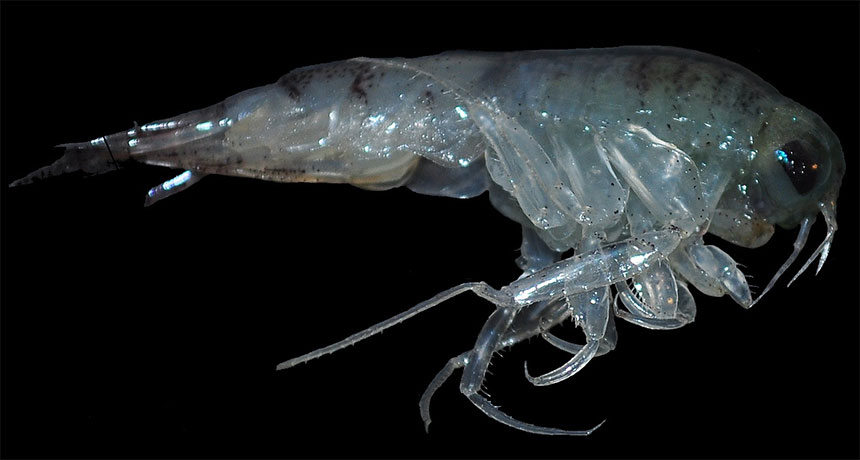(for more about Power Words, click here)
algae Single-celled organisms, once considered plants (they aren’t). As aquatic organisms, they grow in water. Like green plants, they depend on sunlight to make their food.
Arctic A region that falls within the Arctic Circle. The edge of that circle is defined as the northernmost point at which the sun is visible on the northern winter solstice and the southernmost point at which the midnight sun can be seen on the northern summer solstice.
behavior The way a person or other organism acts towards others, or conducts itself.
brine Water that is salty, often far saltier than seawater.
carbon The chemical element having the atomic number 6. It is the physical basis of all life on Earth. Carbon exists freely as graphite and diamond. It is an important part of coal, limestone and petroleum, and is capable of self-bonding, chemically, to form an enormous number of chemically, biologically and commercially important molecules.
climate The weather conditions prevailing in an area in general or over a long period.
climate change Long-term, significant change in the climate of Earth. It can happen naturally or in response to human activities, including the burning of fossil fuels and clearing of forests
colleague Someone who works with another; a co-worker or team member.
fatty acid A large molecule made of up chains of carbon and hydrogen atoms linked together. Fatty acids are chemical building blocks of fats in foods and the body.
food web (also known as a food chain ) The network of relationships among organisms sharing an ecosystem. M ember organisms depend on others within this network as a source of food.
limnology A branch of ecology that studies inland waters, including lakes, streams and groundwater. A scientist who works in this field is called a limnologist.
marine Having to do with the ocean world or environment.
marine biologist A scientist who studies creatures that live in ocean water, from bacteria and shellfish to kelp and whales.
marker (in biomedicine) The presence of some substance that usually can only be present because it signals some disease, pollutant or event (such as the attachment of some stain or molecular flag). As such, this substance will serve as a sign — or marker — of that related thing.
molecule An electrically neutral group of atoms that represents the smallest possible amount of a chemical compound. Molecules can be made of single types of atoms or of different types. For example, the oxygen in the air is made of two oxygen atoms (O2), but water is made of two hydrogen atoms and one oxygen atom (H2O).
oceanography (adj. oceanographic ) The branch of science that deals with the physical and biological properties and phenomena of the oceans. People who work in this field are known as oceanographers.
organism Any living thing, from elephants and plants to bacteria and other types of single-celled life.
pelagic An adjective for life or conditions in the open ocean. These are regions far from coastlines and often deep below the surface.
planet A celestial object that orbits a star, is big enough for gravity to have squashed it into a roundish ball and it must have cleared other objects out of the way in its orbital neighborhood. To accomplish the third feat, it must be big enough to pull neighboring objects into the planet itself or to sling-shot them around the planet and off into outer space. Astronomers of the International Astronomical Union (IAU) created this three-part scientific definition of a planet in August 2006 to determine Pluto’s status. Based on that definition, IAU ruled that Pluto did not qualify. The solar system now includes eight planets: Mercury, Venus, Earth, Mars, Jupiter, Saturn, Uranus and Neptune.
sea An ocean (or region that is part of an ocean). Unlike lakes and streams, seawater — or ocean water — is salty.
species A group of similar organisms capable of producing offspring that can survive and reproduce.
symptom A physical or mental indicator generally regarded to be characteristic of a disease. Sometimes a single symptom — especially a general one, such as fever or pain — can be a sign of any of many different types of injury or disease.
zooplankton Small organisms that drift in the sea. Zooplankton are tiny animals that eat other plankton. They also serve as an important food source for other marine creatures.








